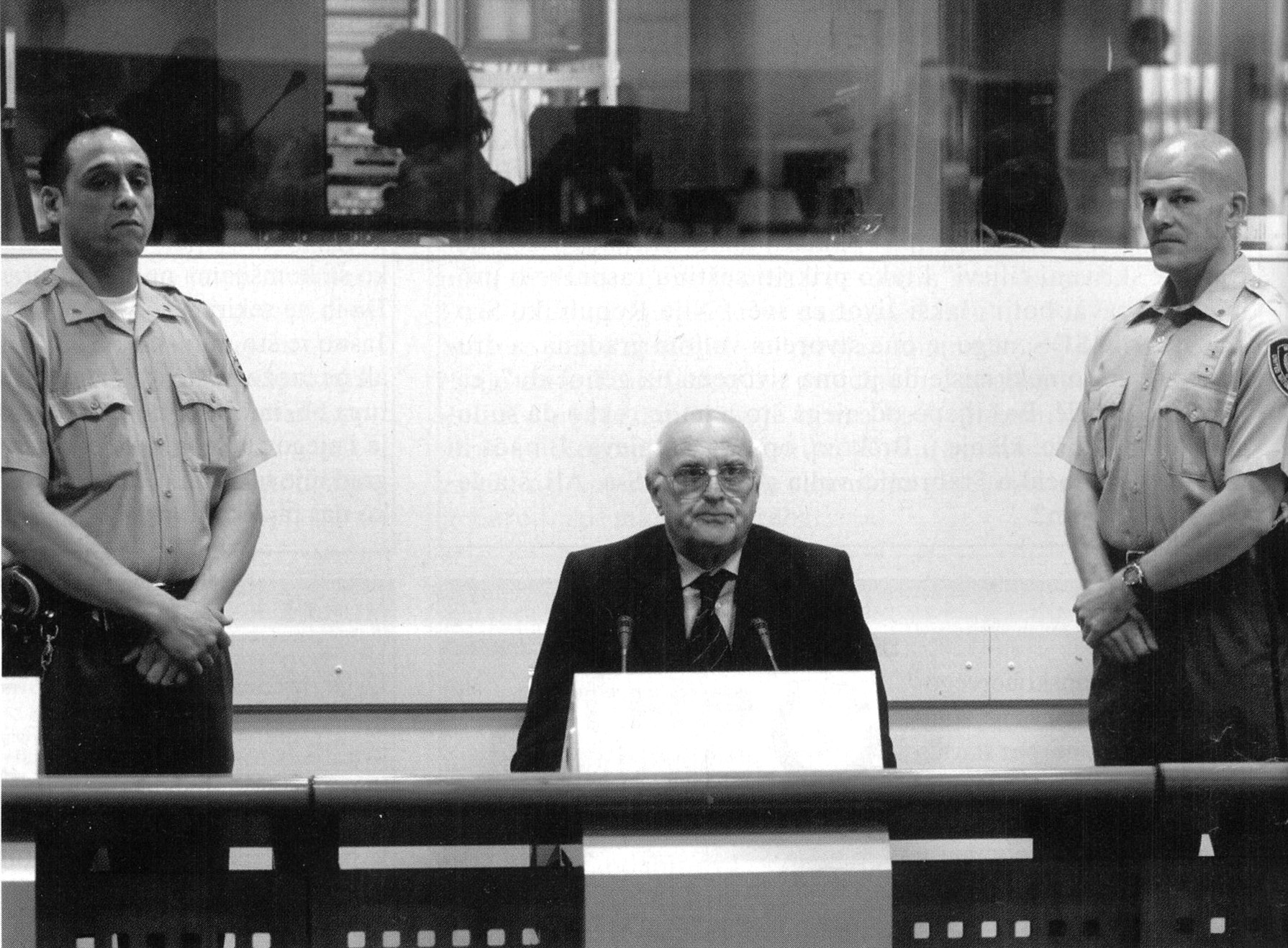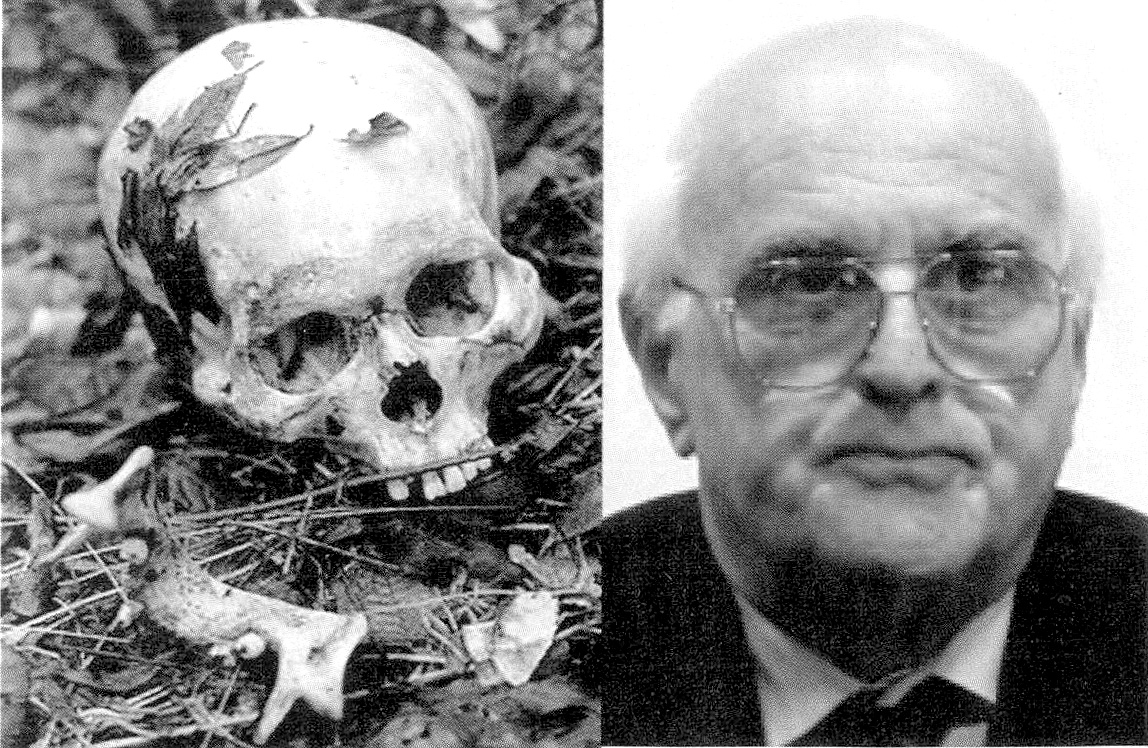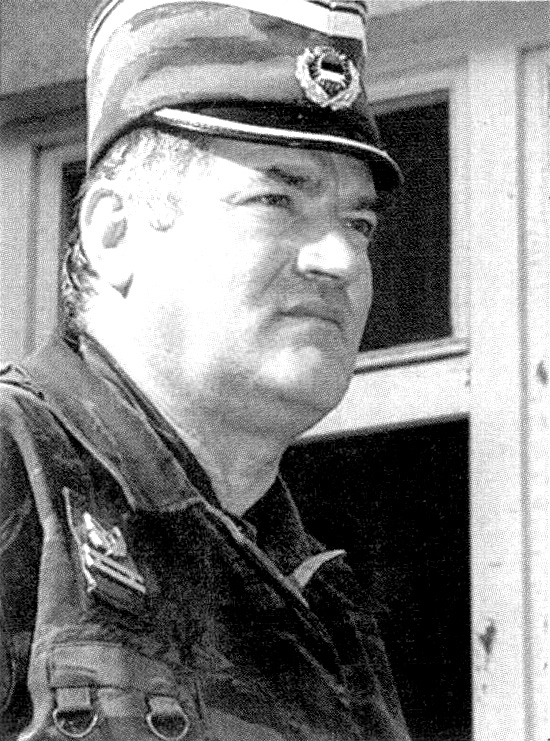 |
Ljubiša Beara, Architect of the Srebrenica Massacre
by Emir Suljagic
A few days after Naser Orić and a number of his officers from the 28th division [of the Army of Bosnia-Herzegovina, AB-H] had left the town on a ‘secret’ helicopter flight from Žepa, the UN in Srebrenica received an unexpected request. A certain Ljubiša Beara wished to meet the commander of the enclave’s defence! No one thought this was accidental. The division’s security officer, standing in for the divisional commander, found it difficult to explain even to the UN why Orić was no longer available. But greater than the AB-H officers’ embarrassment was their fear, once they discovered who Beara really was: head of the security service of the main staff of the VRS [Army of Republika Srpska]. No one had any idea what such a high-ranking officer was doing in the Srebrenica area at this particular time. The answer came in July of that year.

Nine Years Later
In March this year, an investigator from The Hague was standing in front of the house in Belgrade where the wanted high-ranking officer of the VRS lived. When he rang the police to ask for help in arresting him, however, the suspect disappeared from the house within minutes - and, as it turned out, changed his address for good. On 4 October this year, chief prosecutor Carla del Ponte told Serbian prime minister Vojislav Koštunica that official Belgrade would be given a fresh test, similar to the one involving Goran Hadžić, head of the autonomous entity of the Croatian Serbs. Koštunica replied that his government would respect its obligations towards the Tribunal. On Friday 8, after the court’s investigators had made sure that Beara was still in the village near Užice that was his normal hiding-place, Koštunica was given the information. On the following day, 9 October, Serbian police surrounded the house and Beara surrendered without resistance.
He was no longer the same fat, ruddy-faced officer he had been in Potočari in July 1995. Thinner and with dense tufts of grey hair framing a bald pate, Beara looked more like some retired conductor or impoverished academician who could scarcely have any connection with the greatest massacre on European soil since the end of World War II. Beara, however, is an academician of death, a conductor of the Srebrenica massacre, a man who translated Ratko Mladić’s killer instinct into concrete orders. Beara concerned himself with every aspect of the killings: that the buses should be in the right place at the right time; that the execution squads should be ready to receive the prisoners as they climbed out of the buses; that the fuel needed for excavating the mass graves and for their later re-location should be available .... Srebrenica in the autumn of 1995 was his life’s work.

July 1995
The security service of the VRS was central to the crime, and Beara was the man at the centre of the web pulling all the strings. At one end of this web was Captain Momir Nikolić, security officer of the Bratunac brigade; at the other was sub-lieutenant Drago Nikolić, security man of the Zvornik brigade; immediately next to Beara was Colonel Vujadin Popović, the formal superior of those two and head of security of the Drina corps. This web had its own death squad: the 10th diversionary battalion attached to the main staff. When the soldiers of the 10th battalion proved unable to do all the killings, Beara recruited soldiers of the Drina corps. In a taped telephone conversation from the middle of July, Beara asked Radislav Krstić, the commander of the Drina corps who was then in Žepa, to supply soldiers ‘to distribute another 800 packets’. This was one of the last groups of survivors needing to be murdered.
Beara did not always use official channels. At one point his deputy Drago Nikolić managed to find fresh volunteers for the execution squad by promising them new uniforms. More accurately, Beara used official channels only when he had to. In those days he had the power to command everyone and everything. His orders were followed unquestioningly. It was only once, it seems, that an order of his was changed, due to the intervention of Radovan Karadžić. This happened on the night of 13 July 1995, when Beara arrived in the office of Miroslav Deronjić, head of the Bratunac SDS. Interrupting the latter’s meeting with a town official called Ljubisav Simić, Beara said that all prisoners would be executed that night in Bratunac. Deronjić and Karadžić evidently had nothing against the killing of the prisoners, but Deronjić did not want this to happen in Bratunac. In his telephone conversation with Karadžić that night, he received the order that the prisoners be taken ‘down there’, to ‘the storage rooms’. The fate of the prisoners becomes clearer when one remembers that the day after Srebrenica’s capture Karadžić had issued the order: ‘Kill the lot!’. Beara was the man for the job.
Supervisor of the Massacre
Since Karadžić’s administrative apparatus was not as efficient as the Nazi bureaucracy, Beara had to supervise everything himself: from the questioning of the prisoners to their execution, burial and reburial. Dragan Mirković, head of Bratunac municipal services at this time, has stated that on the night of 13 July Beara ordered him to organise his men to collect and bury the bodies. He told him: ‘There will be many corpses and burials’. Dragan Obrenović, chief of staff of the Zvornik brigade, has told how he learned on the evening of 13 July that all prisoners would be brought to Zvornik and killed there; he was told this by Drago Nikolić, who was following Beara’s orders. Serb witnesses at the Hague tribunal testify that finally, in the autumn of 1995, Beara reappeared in Zvornik, dressed this time in civilian clothes, . During the days that followed, parts of the Zvornik municipality were barricaded off and inaccessible, while he and Popović, armed with maps, had the graves dug up again and relocated.
Beara was the invisible hand that guided all events firmly in the direction of death. He disappeared once the operation was over, only to reappear nine years later, this time in order to protect Serbian national and state interests.

Beara was never a run-of-the-mill staff officer. He was a man who always and everywhere - from the moment he first joined Ratko Mladić in Knin - did what others had neither the stomach nor the time to do. An energetic killer, Beara played a crucial role in the events that took place in Srebrenica between the spring and the autumn of 1995. Possessing a rare organisational talent, he almost succeeded: thanks to his systematic approach, for a year or two the Srebrenica massacre was a genocide without the bodies. During those five fatal days at least, he was present everywhere and at all times, a supervisor of works mercilessly driving his incompetent operators. His subordinates were people without whom the genocide would not have been possible. Ratko Mladić the person without whom it would have been inconceivable. Beara the person without whom it could not have been carried out.
This comment has been translated from Dani (Sarajevo), 15 October 2004
|